
The first time a boy shaves his face is a milestone of adolescence, like riding a bike or winning his first baseball game. Unlike riding a bike, practice does not necessarily make perfect when it comes to shaving. Having a visible facial-hair shadow immediately after shaving could mean that you never learned proper shaving techniques. Keep in mind that Rome wasn't built in a day, and neither is the perfect shave -- don't rush through it. Give yourself plenty of time in the morning to shave and you'll soon enjoy the luxury of a smooth, shadow-free shave every day.
Step 1
Shower or bathe with hot water to remove dirt and oils from the skin's surface, soften the facial hair and open the pores. Wash your face with hot, soapy water if you don't have time to shower.
Step 2
Pat your face with a clean towel so that it is not dripping wet, but is still damp.
Step 3
Squeeze a dime-sized amount of pre-shave oil into the palm of your hand, rub your hands together lightly and run them over the areas you plan to shave. This oil will lubricate the hairs and skin.
Step 4
Wet a shaving brush with hot water and pick up a generous amount of shaving cream with the bristles. Lather your face with the shaving cream using upwardly circular motions to raise the facial hairs, which will help you to achieve a smoother shave.
Step 5
Place your fingers on your cheek just above the top of your facial-hair line and gently pull the skin up until the skin beneath your facial hair is tight. Remember to keep each shaving area as smooth and tight as possible to raise the hair roots.
Step 6
Bring the razor to your face and shave your facial hair with gentle pressure in the direction of hair growth using short, even strokes. Repeat, passing the razor over your face and neck until you have shaved every area that you want free of facial hair. Rinse the blade between each stroke to prevent buildup, which can come between the razor and your facial hair.
Step 7
Examine your face carefully in a well-lit mirror. Run your hand over your cheeks, chin and neck and make a mental note of the direction that the hairs grow in each section -- facial hair often grows in several different directions, not just down.
Step 8
Apply a second coat of shaving cream to your face and shave against the direction of your facial hair. Use extremely light pressure when shaving against the direction of hair growth, the razor should just float over the skin. Remember to pull your skin tight to get the smoothest possible shave with the fewest possible nicks and bumps.
Step 9
Rinse your face and neck with warm water to remove the residual shaving cream, pre-shave oil and loose hairs. Follow by rinsing your face and neck with cold water to close your pores. Pat your face dry with a clean towel. Avoid wiping your face roughly, which can irritate the skin.
Step 10
Squeeze or pour a small amount of aftershave toner, balm or moisturizer into the palm of your hand, rub your hands together lightly and run them over the shaved areas. Use alcohol-free toner with a balm if your skin tends to be oily. Use just the balm if your skin is prone to dryness.
Related Articles

How to Stop Facial Redness From Shaving
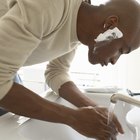
How to Get a Smooth, Bald Look

How to Keep From Getting Ingrown Armpit ...

How to Get a Closer Electric Shave
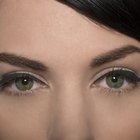
How to Use a Brow Shaver

How to Shave the Bikini Line With No ...

How to Clear Up Red Bikini Line Bumps

Proper Way to Shave a Mustache
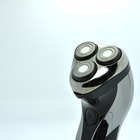
How to Shave With an Electric Razor

How to Take Care of Painful Ingrown Hair

Proper Way to Use a Foil Shaver
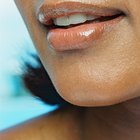
How to Pluck Your Upper Lip With ...

Shaving Armpits the Correct Way
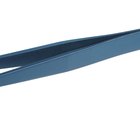
How to Get Rid of Black Hair on Chin ...

How to Shave Legs With an Electric ...

How to Care for a Close-Trimmed Beard

How to Get Rid of Bumps From Plucking

How to Use Vaseline as a Moisturizer ...

How to Open & Clean a Norelco 1050CC ...

How to Get Smooth Shaved Legs When Hair ...
References
Warnings
- Consult your physician if you experience frequent skin irritation as a result of shaving.
Writer Bio
Chance Henson earned a B.A. in English literature and a writing minor from Lamar University. While interning at the "University Press" newspaper and "UP Beat" magazine he received an award for news feature writing from the Texas Intercollegiate Press Association. Henson went on to serve as content editor for "CUSH Magazine," eventually leaving to pursue the development of an online secular humanist educational publication.
Photo Credits
Stockbyte/Stockbyte/Getty Images